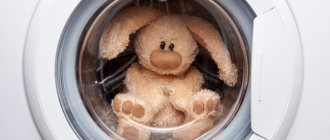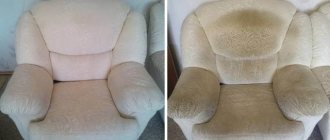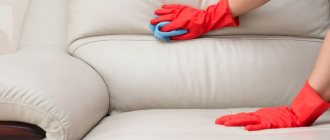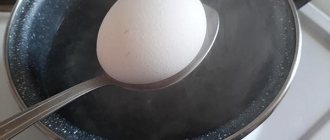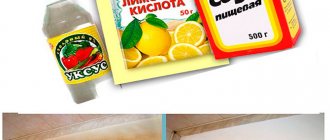What is this text about? In this text we will answer the following questions: how to wash a musical soft toy how to wash musical soft toys how to wash soft toys with music How to properly wash soft toys at home: by hand or in a machine?
Soft toys are faithful companions for children. But not only children love them. Even adults often become passionate and collect teddy bears, dogs... They are soft and cuddly. Their presence in the house creates a relaxing atmosphere. But... It's not just about game items. They are also collectors of dust and other pests, particularly mites. Therefore, you need to know how to wash soft toys in a washing machine and by hand. They must be cleaned according to contamination or once every 3 months.
Choosing a detergent
If you want to clean the plush with a strong disinfectant (this idea especially arises during quarantine in the kindergarten), do not do it! Apart from soap and vinegar diluted with water, the use of other disinfectants and chemicals is not recommended. Toxic substances contained in cleaning products can leave a harmful coating on the surface and vapors in the atmosphere. Children are more sensitive to these substances than adults and react more quickly to chemical residues. This may trigger allergic reactions.
Important! There is no need to wash a healthy child’s things with antibacterial soap or various disinfectants. They destroy the baby's natural microflora, and pathogenic microorganisms are more likely to colonize the body surface.
Purchasing a special detergent for delicate fabrics and wool is not overkill. Conventional products are alkaline and can damage soft surfaces. This especially applies to felt and fleece products (such as from).
Care and disinfection
In addition to regular cleaning, stuffed animals and dolls should be disinfected periodically. This is especially important during quarantine. Soft friends often become carriers of infections, viruses and bacteria.
There are three effective methods to prevent re-infection of a child:
- The steam generator effectively kills a wide range of bacteria without creating difficulties in use. The entire surface is treated with hot steam within a few minutes and you don’t have to worry about the baby’s health.
- Placing products in the freezer is effective not only against pathogenic microorganisms, but will also help cope with dust mites. In winter, it is enough to take the treated object out onto the balcony.
- A lamp with ultraviolet radiation kills microorganisms at the genetic level. To do this, turn it on for an hour in the children's room.
By following the rules of hygiene and disinfection of the soft inhabitants of the children's room, you can not fear for the health of the child. And regular cleaning will preserve the appearance of plush toys.
Choosing a washing method
Felt and fleece bears can be machine washed on a delicate cycle. If there are any care restrictions, such as a prohibition on machine washing, do not neglect them. Otherwise, you risk damaging the fabric or filling. A washed toy must be dried thoroughly. Although most moms praise tumble drying, it is not recommended by a number of manufacturers.
You can wash children's toys with soap. Create a soapy lather in water, soak a cloth in it, and clean by hand. Use only white or light-colored cloth; colored materials may stain the surface being cleaned. This toy wash is most suitable for items with musical mechanisms, talking bears, etc.
You need to wash soft toys in a washing machine or by hand, following a number of rules:
- Toys with balls inside (relieving stress, developing motor skills) are cleaned only superficially - with a cloth soaked in soapy foam. It is not advisable to wash anti-stress toys in a washing machine. Even strong seams in the drum can break.
- Dark stains on toys can be wiped off with a sponge soaked in diluted alcohol or dish gel. This must be done before washing.
- Products made from plush yarn, knitted fabric and velor, knitted toys (amigurumi) without accessories, balls, batteries, plastic or silicone parts can be machine washed. In this case, it is advisable to use a washing net to prevent damage to the drum.
- Please note the importance of rinsing thoroughly to ensure no detergent is left on the plush.
Are they dirty?
Watch a child play with a teddy bear, bunny or rag doll.
He not only rolls the toy on the floor, there are also hugs and kisses, and a taste test. What adds to the problem is that no matter how cleanly you tidy your apartment, the ubiquitous dust still penetrates the premises and settles on surfaces. It is not always possible to notice how gradually a toy loses its brightness of color under a layer of dust.
Children spend a lot of time with soft toys, so these products will definitely need to be washed.
In addition, children often do not let go of their favorite soft toys for literally a minute. This means that the soft playmate will probably swim in a puddle, roll around in the sandbox and smear himself on the grass. As you can see, periodic washing is simply necessary for such toys. Otherwise, the germs along with the dirt will transfer to the child.
Soft toys should be washed as they become dirty. If your child really loves such an item, then washing should be done at least every 2-3 weeks. Before you start cleaning, look at the toy label: care instructions are indicated there.
Unfortunately, dust mites are permanent residents of soft toys, and they can cause allergies in a child.
Machine washable
Recommendations for proper machine washing:
- Be sure to read the label on the product. Sometimes cleaning in the washing machine is not recommended.
- Check if there is a music box, battery, or bead filling inside. Remove the device from a toy with music or similar mechanism.
- Place the product in the washing net.
- Use delicate cycle, warm or cold wash. But avoid hot water. It can dissolve glue.
- Use baby detergent.
- Wash at 30–40ºС. If this temperature is exceeded, there is a risk of damage to the product.
- Do not try to force a large toy into the car. You may damage it.
- After rinsing, do not wring out the product; dry it with a terry towel.
- Dry flat or hung.
Drying
Proper drying will help prevent the toy from smelling musty and damp.
- It is better to wring out a soft toy by hand after washing. Having pulled it out of the basin or drum, run your hands over it from top to bottom.
- Place on a horizontal surface and, pressing lightly, remove any remaining water.
- Wrap it in a non-fading thick fabric or terry towel. Moisture will quickly be absorbed into it.
- Remove the towel and leave the toy in a horizontal position, for example, on a clothes dryer, in a well-ventilated room. When drying indoors, the filler may develop a musty odor.
- Comb the toy's pile with a wide-toothed comb until it is completely dry.
- Periodically turn the product over and shake it to dry all sides evenly, and then the filler will not form clumps.
Drying in a vertical position, such as hanging on a clothesline, may cause warping.
You can reduce drying time by placing the product next to radiators or a heater. But you can't dry it near an open fire. This is a fire hazard.
Handwash
You can wash your teddy bear in a basin or bath with soapy water. When cleaning, follow the symbols on the label to indicate the appropriate water temperature. If you are unsure whether an item is machine washable, clean it by hand.
Hand wash procedure:
- Pour water (cold or slightly warm) into a bowl.
- Add a little liquid soap (about 1 teaspoon) or baby shampoo (eg Johnson).
- Do not use too much detergent, it may disturb the color and cause allergies.
- Wet the toy.
- Leave for 15-30 minutes.
- Wash the product carefully.
- Remove washable stains with your hand or a sponge; for stubborn stains, use vinegar.
- Rinse off any remaining soap.
- Squeeze gently.
- Use a towel to absorb excess water (place the stuffed animal between the towels and press down).
When hand washing, it is important to wring the toy thoroughly to get as much water out of it as possible. It is not recommended to place it in the dryer. It may lose shape and size. It is best to dry outside. But beware of direct sunlight, which can disturb the colors.
Manually
Hand washing is a troublesome task. To implement it you will need to allocate a lot of time. This way you can keep your child busy a little.
How to do this effectively and without damaging the product:
- We take a large basin. Pour water and detergent into it.
- We thoroughly soap plush and rubber toys. The rubber may come apart at the joints; rinse it immediately and dry it. Leave the plush items to bathe for 20 minutes.
- Rinse in clean water. We change it as the foam releases.
- Squeeze out excess moisture and set to dry.
Cleaning the dirt by hand is not difficult, but it is still a hassle. This is a good activity for a child.
This method can teach your child about cleanliness and the importance of maintaining order.
You can wash any type of products by hand, except music ones.
Washing large soft toys
You can wash large soft toys in the same way as small ones. In addition, it is recommended to vacuum them often using a special furniture brush. Be careful with sewn or glued additions (beads, buttons). They are often held on by silicone; If used frequently with a vacuum cleaner, they may come off.
Large toys can be cleaned with upholstery foam instead of washing. If this is an expensive product, first check the effect of the product (whether it disturbs the color, etc.). First, vacuum the soft surface, apply foam to it with a brush or sponge, leave it on (see instructions for using the substance), vacuum again, and clean with a brush.
Important! When cleaning large toys, special cleaning foam can be replaced with soap foam.
Strong types of mud
It happens that it is impossible to return the original purity of a product using one of the methods described above. In this case, you need to pay attention to the vacuum cleaner. First, you will need a special nozzle designed for upholstered furniture. The vacuum cleaner is switched to delicate mode (low power). After this, slowly move the nozzle from top to bottom.
If the toy is decorated with small parts, then extra care must be taken. You need to avoid such places with the nozzle. The duration of the procedure is no more than 5 minutes. It happens that a soft toy cannot be cleaned using this technique. Then you need to resort to wet cleaning. There are some precautions to keep in mind:
After the foam has formed, you need to take a delicate washcloth. Gently move the foam sponge over the contaminated elements of the product. Experience shows that it is possible to clean a soft toy the first time. The procedure changes slightly when it comes to felt products:
It is recommended to carry out cleaning of soft products with increased care if any machine is installed in them. If moisture or cleaning agent gets inside, the toy may become unusable.
Washing with a musical mechanism
It is recommended to wash musical soft toys (products with a musical mechanism) by hand with soapy water and a brush or sponge. When cleaning, be careful not to get the device wet, otherwise the toy will stop working. This will cost you a lot of tears, screaming, and the purchase of a new, working toy.
If there are batteries inside (they are present in talking toys), before cleaning, carefully open the seam and remove them. Sew the torn area with a large stitch (to prevent the filling from falling out), clean the product in a suitable way, and dry it. Insert the batteries into place and sew the seams well.
How to clean faux fur. Advice
Faux fur can be cleaned using other means, the most popular of which is regular soap solution. To do this, it is best to use hair shampoo or liquid soap rather than hard soap. They will act on the material much softer.
Before using any other faux fur cleaner, it is best to apply it to an inconspicuous area of the item first and wait a couple of minutes. This will ensure that the product does not damage the fur or discolor it. This applies primarily to the use of gasoline to clean greasy stains on faux fur products.
To remove grease stains from faux fur, mix a small amount of refined gasoline with potato starch to form a thick paste. Gently apply the product to the contaminated area and leave for a while. When the gasoline has evaporated, use a brush to brush off the starch and comb the fur. You can remove a greasy stain from faux fur by wiping the contaminated area with a cotton swab soaked in purified gasoline.
Page 2
How I found my ideal hair growth product
Hello dear! I want to share with you my solution to the sensitive problem of hair loss . The problems are very serious, at least for me. I would never have thought that this misfortune would touch me, especially at the age of 29 (read more...)
How to wash small soft toys and clean bulky ones
To do this, you need to open the seam on the side, pull out the filling, place it in a laundry bag or pillowcase, tie or sew it tightly, and wash it in a machine on the “delicate cycle.” And wash the outer fabric by hand so that the plastic parts and decorations do not come off.
Expert opinion
Ekaterina Korneva, expert in the field of care, cleanliness and beauty
I will help you understand all the intricacies.
To do this, you need to open the seam on the side, pull out the filling, place it in a laundry bag or pillowcase, tie or sew it tightly, and wash it in a machine on a delicate cycle. After treating with a soap solution, each area is wiped with a clean damp cloth, and then dry to absorb the remaining moisture. Watch the master class online: Restoration of a soft toy (dog) If you have any questions, please contact me, I will be happy to answer!

